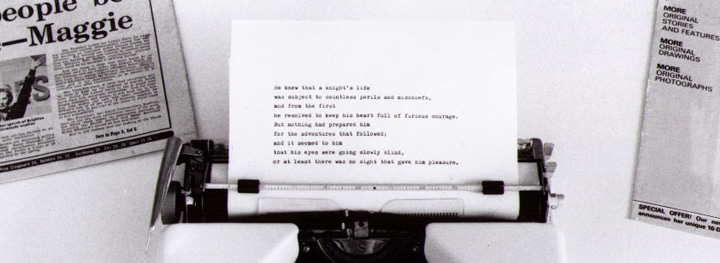Art & Art History
The Way We Live Now: Beyond Social Documentary

Gallery 400
400 South Peoria Street, Chicago, IL 60607
Karen Knorr, Gloria Chalmers, Mitra Tabrizian, Connie Hatch, Carole Conde and Karl Beveridge, Elizabeth Sisco, Lisa Lemenz, and Mark Lewis
The Way We Live Now: Beyond Social Documentary is a provocative photography show curated by New York critic Abigail Solomon-Godeau. Eight photographers – four British, four American and Canadian – address issues ranging from modern war and the hazards of nuclear energy to sexual politics, union organizing, forced gentrification and the exploitation of migrant labor.
Rejecting the prevalent notion that traditional social documentary photography can be neutral and objective, curator Solomon-Godeau chose works, which “jettison all claims to photography ’s neutrality or transparency.” The artists – Karen Knorr, Gloria Chalmers, Mitra Tabrizian, Connie Hatch, Carole Conde and Karl Beveridge, Elizabeth Sisco, Lisa Lemenz and Mark Lewis – presented critiques of both photographic conventions and contemporary society. They set out to unmask ideological codes imbedded in the documentary tradition while uncovering areas of class and gender conflict.
The types of concerns addressed in The Way We Live Now would seem to categorically belong to the practice of traditional social documentary photography. Historically such photography has encompassed a variety of approaches, ranging from the militant exposé (in the works of Jacob Riis and Lewis Hine) to what the critic Allan Sekula has termed the “find-a-bum school of concerned photography.” More reformist than radical, social documentarians had until recently failed to question the prevalent mythologies of all documentary photography: that the photographic image is autonomous (can speak for itself); that it is transparent (seeing is knowing); that its content and message exist independently of its ontological status as picture, its formal codes, its context, venue, and social functioning.
“In assembling this exhibition, the intention was to present a range of work, which demonstrated a critical awareness of the problems and contradictions inscribed in the documentary mode Itself.” — Abigail Solomon-Godeau
The work of the photographers in this exhibition is distinguished from this older form of social documentary in that it attempts – with greater or lesser success – to reckon with such issues. Recognizing that, for the most part, photography actively conceived of as “political” in intent and content functions no differently, and in fact is often indistinguishable, from mainstream photojournalism and conventional documentary modes, these photographers generally elected to take another tack altogether. Following Walter Benjamin’s observation that,”Less than at any other time does a reproduction of reality tell us anything about reality, and that therefore something has to be constructed, something artificial, something set up,” these photographers abandoned all claims to photographic neutrality or transparency.
There was some irony in the fact that at the same time as much recent criticism (and certain art production) became concerned with the instrumental and ideological functioning of photography, photographic practice bearing an explicit social or political agenda found itself increasingly marginalized within the worlds of both photography and art more generally. In addition to problems of venue and exposure, such photographic practice was also beset by questions as to its own self-definition, purposes, form of address, and practical functioning. In assembling this exhibition, the intention was to present a range of work, which demonstrated a critical awareness of the problems and contradictions inscribed in the documentary mode Itself. Adapting a variety of formal and discursive strategies, the photographers who exhibited were involved with trying to invent photographic forms that were consistent with the political or social critiques that were the raison d ’être of their work in the first place. Pushing the boundaries of social documentary as conventionally understood, and asserting the textuality of the photographic image, such work attempts to function critically in a doubled sense: externally in that it deals with the actual world, and internally in that its critical operation is turned equally, inwardly, upon itself.
The Way We Live Now was originally mounted at P.S. 1 in Long Island City, New York. A lecture by Solomon-Godeau accompanied the exhibition in Gallery 400.